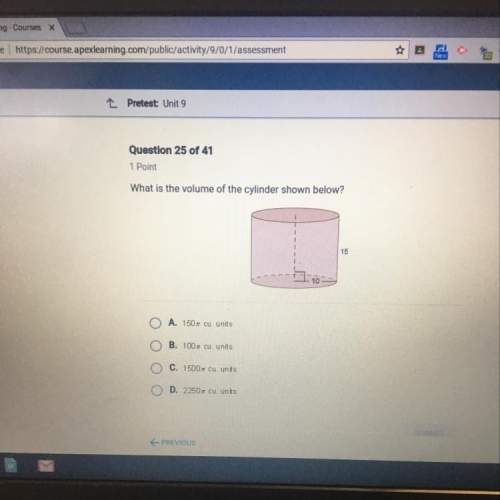
Mathematics, 06.05.2020 05:45 tommyaberman
Bank employees from a large international bank were recruited with 67 assigned at random to a control group and the remaining 61 assigned to a treatment group. All subjects first completed a short online survey. After answering some general filter questions, the treatment group was asked seven questions about the employees' professional background, such as "At which bank are you currently employed?" or "What is your function at this bank?" These are referred to as "identity priming" questions. The control group was asked seven innocuous questions unrelated to their profession, such as "How many hours a week on average do you watch television?"
After the survey, all subjects performed a coin‑tossing task that required tossing any coin 10 times and reported the results online. They were told they would win $ 20 for each head tossed for a maximum payoff of $ 200. Subjects were unobserved during the task, making it impossible to tell if a particular subject cheated. The table shows the results of both the control and treatment groups. The first line gives the possible number of heads on 10 tosses, and the next two lines give the number of subjects that reported tossing this number of heads for the control and treatment groups, respectively. For example, 16 control subjects reported getting four heads.
Number of heads 0 1 2 3 4 5 6 7 8 9 10
Control group 0 0 1 8 16 17 14 6 2 1 2
Treatment group 0 0 2 4 8 14 15 7 6 0 5
If a subject is cheating, then we would expect them to report doing better than chance, or tossing six or more heads.
(a) Find the proportion of subjects in each group that reported tossing six or more heads. (Round your answers to four decimal places.)
(b) Test the hypotheses that the proportions reported tossing six or more heads in the two groups are the same against the appropriate alternative.
What are the null and alternative hypotheses?
a) H0 : p1 = p2 versus Ha : p1 > p2.
b) H0 : p1 = p2 versus Ha : p1 < p2.
c) H0 : p1 = p2 versus Ha : p1 ≠ p2.
d) H0 : p1≠ p2 versus Ha : p1 = p2.
(c) Find the test statistic and P-value. (Round your answers to three decimal places.)
(d) What is the conclusion of the hypothesis test in the context of the problem?
a) There is strong evidence that the proportions reported tossing heads six or more times differ between the two groups. This provides definitive evidence in favor of the researchers' conjecture that banking culture favors dishonest behavior.
b) There is moderate evidence that the proportions reported tossing heads six or more times differ between the two groups. This provides some evidence in favor of the researchers' conjecture that banking culture favors dishonest behavior.
c) There is very little evidence that the proportions reported tossing heads six or more times differ between the two groups. It is difficult to prove the researchers' conjecture that banking culture favors dishonest behavior.
d) There is not enough evidence that the proportions reported tossing heads six or more times differ between the two groups.

Answers: 3


Other questions on the subject: Mathematics

Mathematics, 21.06.2019 15:00, caitybugking
Find the solution of system of equation y= x-4 y=4x+2
Answers: 3


Mathematics, 22.06.2019 01:00, amandanunnery33
Use the drop-down menus to complete the statements to match the information shown by the graph.
Answers: 3

Mathematics, 22.06.2019 01:20, mickeyo2003
The domain of the following relation: r: {(3, 5), (8, 6), (2, 1), (8, 6)} is (1 point) no domain exists {1, 5, 6} {3, 8, 2, 8} {2, 3, 8}
Answers: 2
You know the right answer?
Bank employees from a large international bank were recruited with 67 assigned at random to a contro...
Questions in other subjects:




Mathematics, 08.05.2021 19:40


Arts, 08.05.2021 19:40

English, 08.05.2021 19:40

Chemistry, 08.05.2021 19:40





